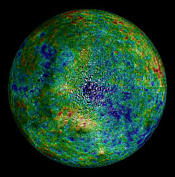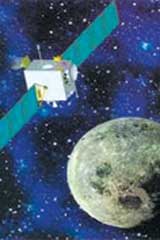Introduction 
To step on the moon has been dreams of thousands years for Chinese people and it’s also the common goal of human being. After about 10 years’ research and preparation the first phase of Moon Exploration Project, namely the Round Moon Flight Project by No. 1 Satellite Chang’e was launched in January 2004. The detailed design scheme of the whole and the subsystem of the project were finished before September of the same year. The satellite prototype and its testing were finished before the end of 2005. It has been planed to complete the final design, manufacture, assembling, testing and various experimentations before October 2006, and the satellite is to be lunched into space in the middle of April 2007.
No. 1 Moon Exploration Satellite Chang’e is consist of two parts: the carrier No.3 DongFangHong satellite as a platform and payload of scientific equipments. The satellite will be sent to its moon’s orbit by carrier rocket No.3 ChangZheng. It will move around the moon in an orbit about 200km above lunar surface for 1 year where 4 scientific mission will be accomplished. ‘Analysis of the contents of the useful elements and the distribution characteristic of types of substance on the lunar surface, preliminarily plot the elements distribution on the lunar surface’ is one of the mission and which is also the main research target of this laboratory.
Therefore, a joint research project of this laboratory with the Purple Mountain Observatory, Chinese Academy of Science located in NanJing has been established to study the payload of the equipments for moon exploratory.
 Research goals
Research goals
1. Theoretical study of the energy and strength of the γ- rays emitted from lunar surface.
2. The study of the background suppression technique for γ- ray and x – ray spectrometers.
3. Manufacture of the mini-type functional prototype of α and x – ray detectors with low power, high resolution for moon exploration.
4. Manufacture of the mini-type and functional prototype γ– ray detector.
5. Spectra analysis technique for the high background energy spectra of the lunar surface, and
6. Plot various elements distribution graph of the lunar surface.
